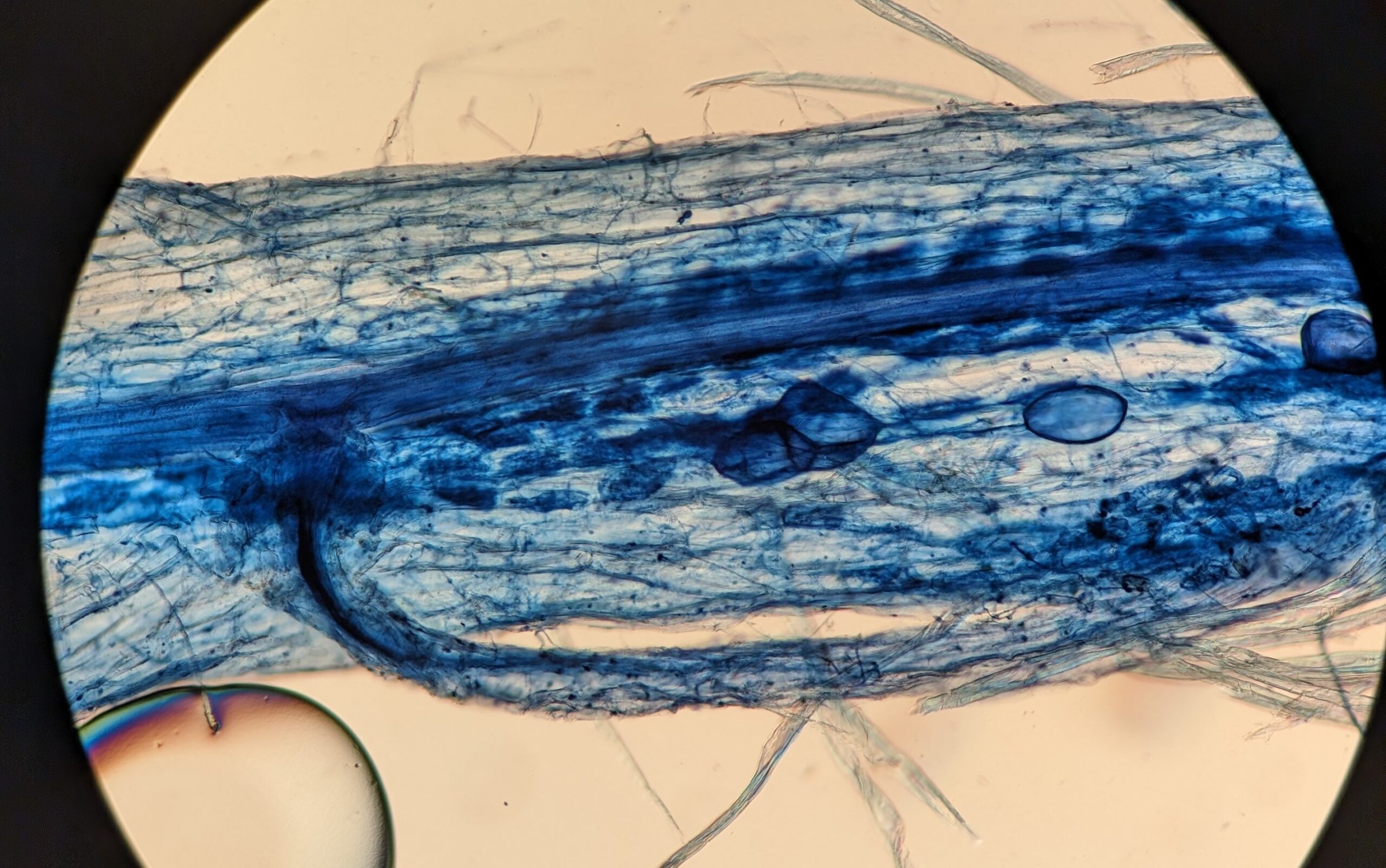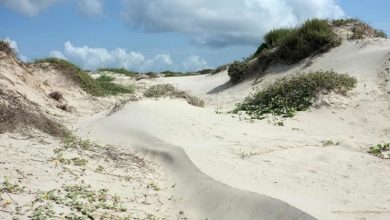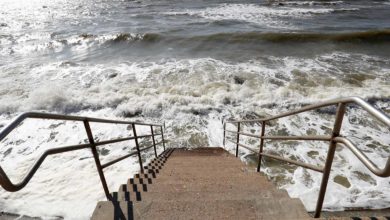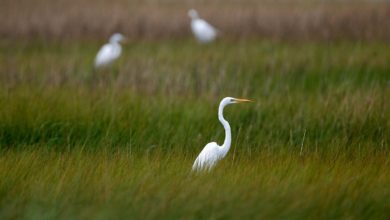The role of fungal communities in sand dunes

As we have learned in previous posts, a fungal community interacts with and influences an ecosystem in a multitude of ways such as binding soil particles or bringing nutrients to plants. To understand how our inoculums may affect restored dunes, we must investigate each property individually
How much fungi is binding the sand together?
Extraradical hyphae (ERH), or, the part of the fungus that exists outside of a root, is responsible for binding individual pieces of sand together. This process helps prevent beach and dune erosion. As the amount of sand bound to ERH grows, they are more capable of withstanding the force of wind or waves.

To understand our inoculum’s capacity to bind grains of sand and prevent erosion, we measure the amount of ERH present in the sand. After isolating the ERH through a series of very fine sieves, it is stained, fitted with a grid, and observed under a microscope. The more hyphae (blue) present, the greater its ability to trap sand and contribute to building dunes.
How is fungi benefitting native dune plants?
Arbuscular Mycorrhizal Fungi (AMF) actually grow inside the cells of plant roots! They form arbuscules, or “little trees”, which are branching structures that serve as the location of nutrient transfer between the two organisms; the plant receives hard-to-access nutrients like nitrogen and phosphorus while the fungi receive sugars that it can’t make on its own. This mutually beneficial relationship is key to reducing plants’ stress in the harsh environment of a dune.
To measure the extent to which fungi are facilitating plants, we look for key characteristics in their growth habits. After staining the interior of plant root cells, we observe the presence of fungal hyphae, arbuscules, and vesicles where nutrients are stored. These all indicate the amount of nutrient transfer that is occurring. Conversely, we also look for indications of disease or damage in the plant cells. Plants are more likely to be healthy in stressful environments with the facilitation of AMF.
Feagin, Rusty & Figlus, Jens & Zinnert, Julie & Sigren, Jake & Martínez, M. & Silva, Rodolfo & Smith, William & Cox, Daniel & Young, Donald & Carter, Gregory. (2015). Going with the flow or against the grain? The promise of vegetation for protecting beaches, dunes, and barrier islands from erosion. Frontiers in Ecology and the Environment. 13. 203-210. 10.1890/140218.




